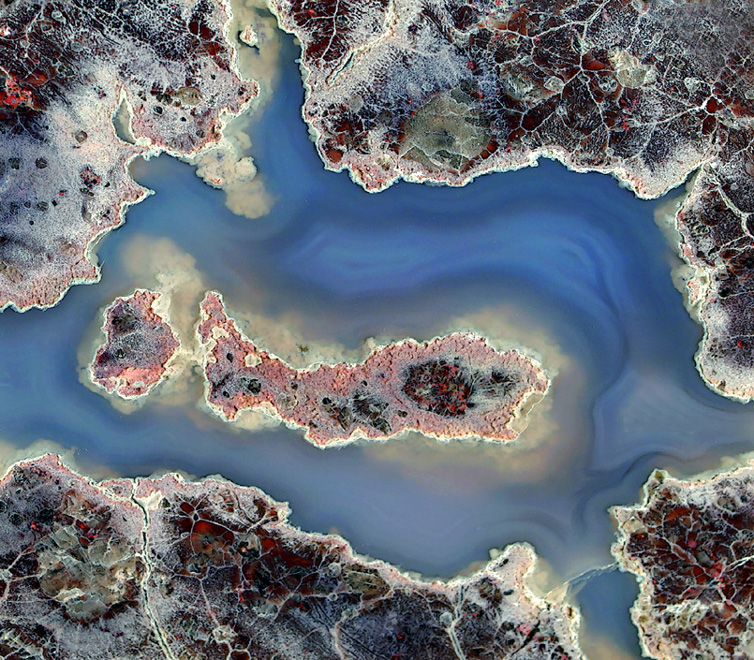Rails and Trails Imaging
Oregon Thunderegg
Archival Digital Print, printed with pigmented inks on premium matte media
8.5" x 11" $45
Thundereggs are found in areas of previous volcanic activity. As rhyolite-perlite lava flowed out, gasses made it frothy and bubbly. Spherical nodules were formed, most about the size of a baseball. As they cooled over millions of years they crystallized, driving out the gasses and leaving a hollow lithophysae. Being buried in the ground, water containing many minerals, including silica, penetrated the pockets through a crack in the nodule. As water slowly dissipated, the solution deposited agate (chalcedony SiO2) inside and decomposed the crust.
This cut and polished thunderegg has a grayish-blue chalcedony hue with several fortifications running through it, reminding you of islands and currents. There are pieces of matrix that look like they are floating and extending from within the agate. The reddish to beige matrix includes some large phenocrysts, with the outside rind showing a nice example of these phenocrysts left exposed.
